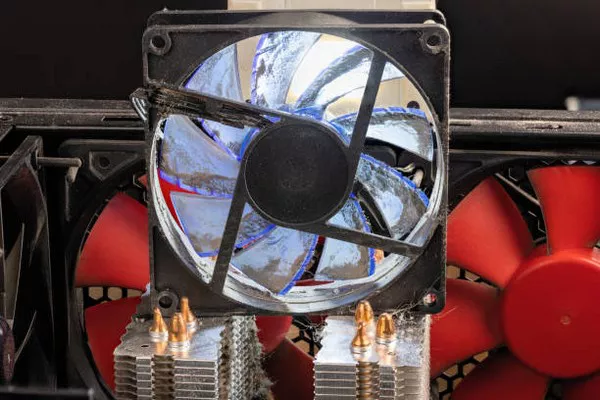In an era where power outages can disrupt daily life, having a reliable generator for your home is essential. For homeowners with approximately 2,000 square feet of living space, determining the appropriate generator size involves understanding your energy needs, the types of appliances you wish to power, and the generator options available. This article will guide you through the considerations necessary to choose the right generator for a 2,000 square foot house.
Understanding Generator Types
Portable Generators
Portable generators are versatile, relatively affordable, and easy to use. They can power essential appliances during outages but require manual setup and fuel management.
Power Output: Typically ranges from 2,000 to 10,000 watts.
Fuel Types: Gasoline, propane, or diesel.
Standby Generators
Standby generators provide a more permanent solution. They are permanently installed outside the home and automatically kick in during power outages.
Power Output: Generally ranges from 5,000 to 20,000 watts or more.
Fuel Types: Natural gas or propane.
Inverter Generators
Inverter generators are a subtype of portable generators that produce cleaner power suitable for sensitive electronics. They are quieter and more fuel-efficient.
Power Output: Usually ranges from 1,000 to 4,000 watts.
Fuel Types: Gasoline or propane.
Calculating Power Needs
Assessing Appliance Wattage
To determine the size of the generator required, you’ll need to calculate the total wattage of the appliances you plan to run during an outage. This includes both the starting and running wattages.
Starting Watts: Some appliances, like refrigerators and air conditioners, require more power to start than to run.
Running Watts: This is the continuous power required to keep the appliance running.
List All Essential Appliances: Consider what you need during an outage (e.g., refrigerator, lights, heating/cooling).
Sum the Running Watts: Add together the running watts of each appliance.
Add Starting Watts: Include the highest starting wattage for appliances that require it.
Example Calculation:
Refrigerator: 300W
Central Air Conditioner: 2,000W (starting: 4,000W)
Heater: 1,500W
Lights: 500W
Total Running Watts: 300 + 2,000 + 1,500 + 500 = 4,300W
For this example, you need to consider the starting watts as well. Thus, the generator should be able to handle at least 4,300W with a peak capacity for the air conditioner.
Choosing the Right Generator Size
General Sizing Guidelines
Safety Margin: It’s advisable to choose a generator that provides a 20% safety margin above your calculated needs. This ensures that you can comfortably run your appliances without overloading the generator.
For our example of 4,300W, the recommended generator size would be:
4,300W x 1.2 = 5,160W
Final Decision: Consider the options available in generators. A generator rated between 5,500 to 6,500 watts would be a suitable choice for a 2,000 square foot home, allowing you to cover your needs comfortably.
Additional Considerations
Future Needs: Think about potential future energy needs. If you plan to expand your home or add more appliances, consider a generator with a higher capacity.
Local Regulations: Check local codes regarding generator installations, especially for standby generators.
Fuel Type: Consider the availability and cost of fuel types in your area. Natural gas may be more convenient for standby generators, while portable units typically run on gasoline.
Installation and Maintenance
Installation Tips
Professional Installation: For standby generators, hiring a qualified technician is essential. They will ensure safe installation, compliance with codes, and proper sizing based on your home’s layout.
Location: Place the generator in a well-ventilated area, away from doors and windows to avoid exhaust fumes entering your home.
Maintenance Practices
Regular Checks: Inspect your generator monthly, checking oil levels, fuel levels, and battery health.
Annual Servicing: Schedule annual maintenance with a professional to ensure reliability.
Fuel Storage: Store fuel safely and check expiration dates, especially for gasoline.
Cost Considerations
Generator Costs
Portable Generators: Range from $500 to $3,000 depending on the brand and power output.
Standby Generators: Typically range from $3,000 to $10,000, including installation costs.
Inverter Generators: Usually between $1,000 and $4,000, depending on size and features.
Operating Costs
Fuel Costs: Calculate estimated monthly fuel costs based on how often you expect to run the generator.
Maintenance Costs: Factor in annual maintenance and any necessary repairs.
Conclusion
Choosing the right generator for a 2,000 square foot home involves careful consideration of power needs, the types of appliances to be powered, and various generator options. By calculating total wattage requirements and accounting for a safety margin, homeowners can make informed decisions that will keep their households running smoothly during outages. Investing in a quality generator ensures comfort and security, providing peace of mind in unpredictable circumstances. Whether opting for a portable or standby generator, being prepared will enhance your readiness for any power challenges that may arise.
Related topics:

